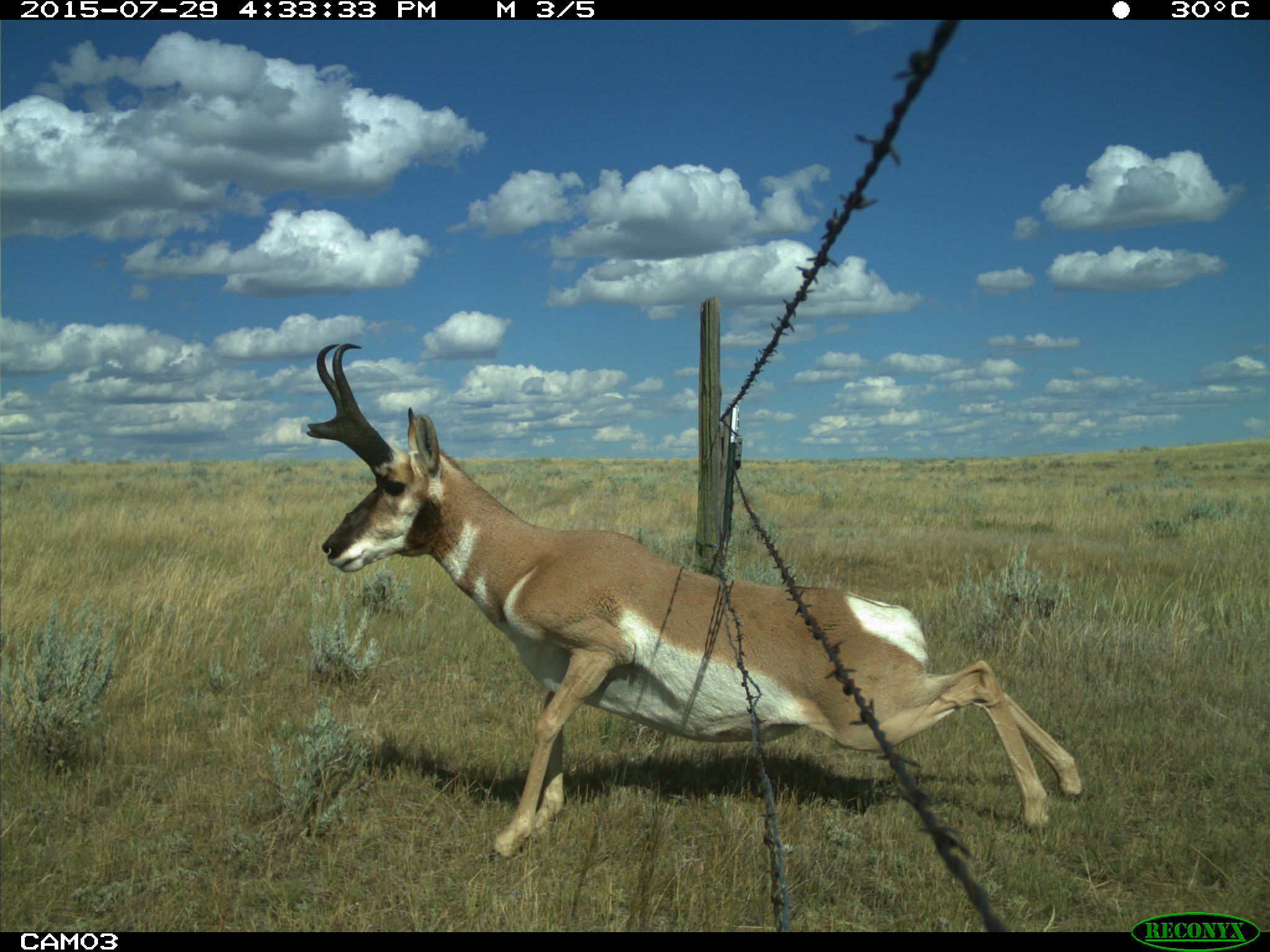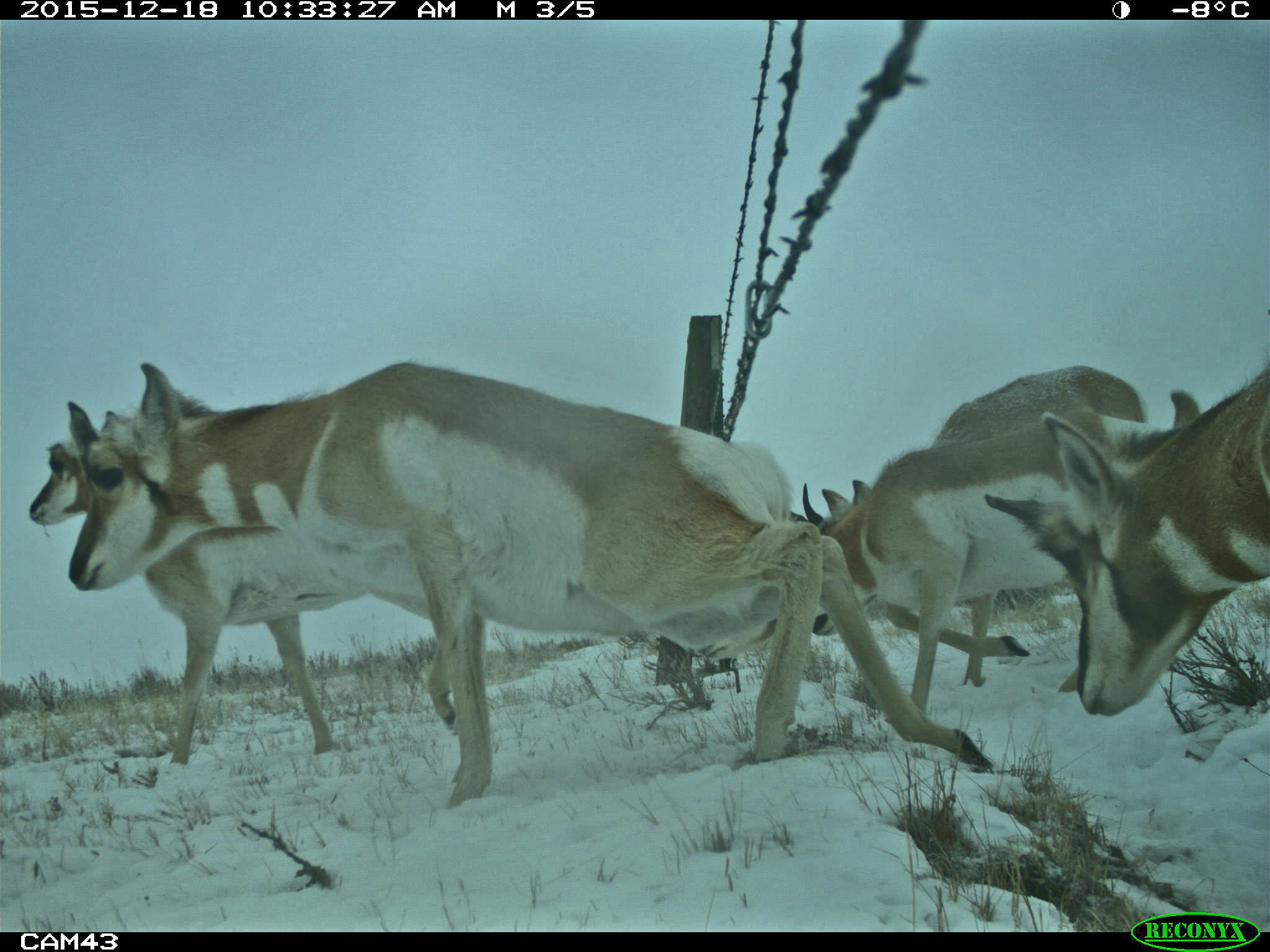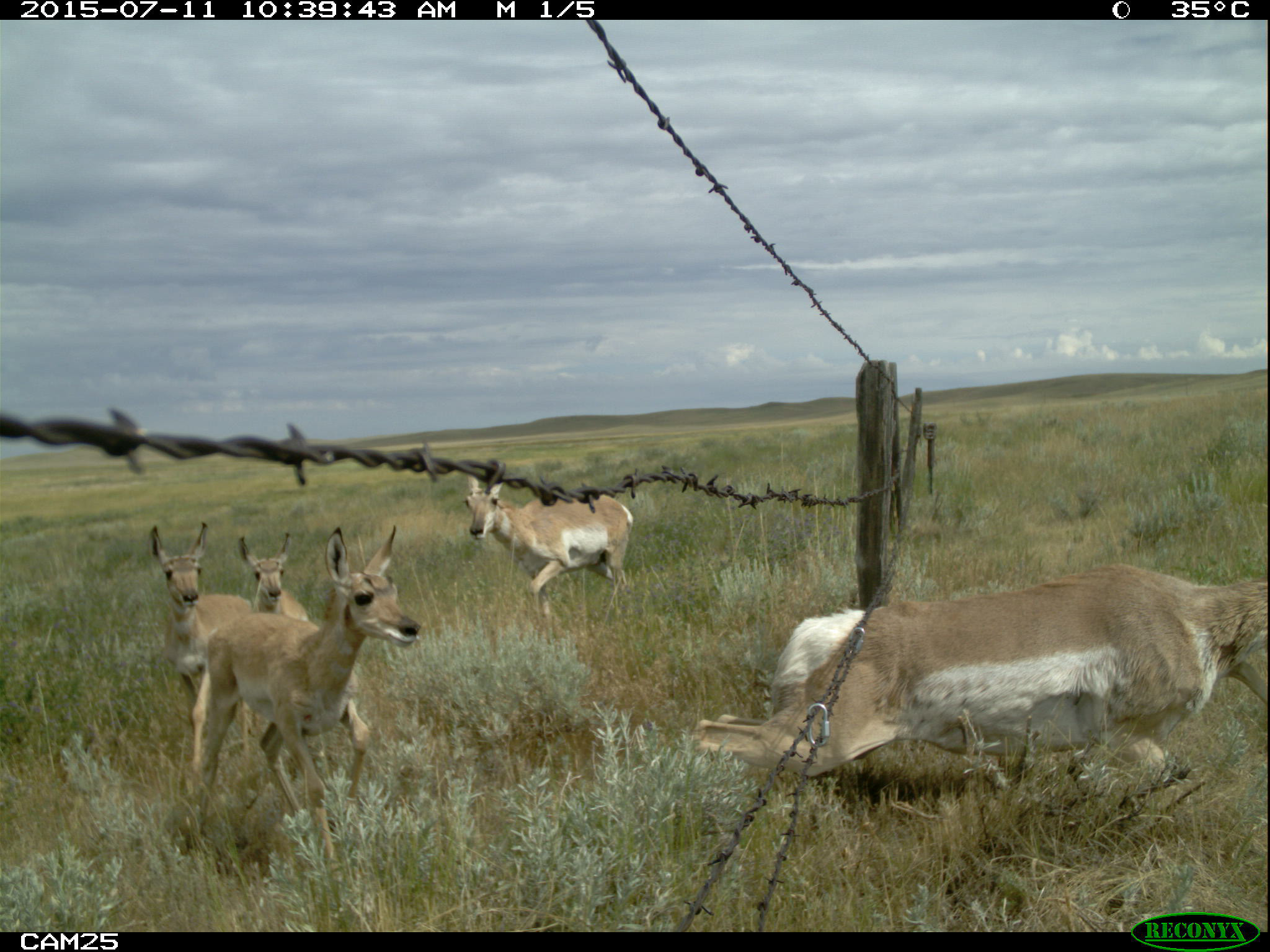Pronghorn may be the second fastest land mammal on Earth, but a simple fence can stop them in their tracks. Their speed has allowed them to roam the continent for millennia, surviving the age of the wooly mammoth and saber-toothed tiger, but it is geography and evolution that account for one notable shortcoming.
“People want to know why they don’t jump,” says University of Montana wildlife biologist Andrew Jakes. “Pronghorn are a highly adapted species to open landscapes. Although they have the ability to jump, they typically crawl under fencing since, for eons, they never had to jump over anything taller than sagebrush.”

In a Western landscape crisscrossed with thousands of miles of barbed-wire fencing, these migrating animals face a real dilemma.
The biggest problem is that the bottom wire of many fences is strung too low for pronghorn to crawl under safely. “Even when they can squeeze under, the barbed wire often scrapes off hide,” says Montana Grasslands Conservation Director Brian Martin. “That exposes the animals to infection and frostbite.”

Pronghorn are known to travel many extra miles searching for places to cross a fence during migration, burning up calories that will be vital to get them through the long northern winters.
That’s why Jakes, Martin and the staff of the Conservancy’s Matador Ranch joined with the Alberta Conservation Association to study the best ways to modify fences so that they allow pronghorn to pass through them safely, while keeping cattle inside.
The researchers studied three different modifications on the Matador Ranch in Montana and locations in Alberta. Each raised the bottom wire to a minimum of 18” off the ground – high enough for the pronghorn and young deer and elk to get under, but low enough to contain cattle. In one case, they replaced the lowest barbed wire with a smooth wire.

In the second they encased the lowest wire in plastic pipe – a so-called “goat bar.” Both those methods created a smooth bottom surface.

In the third, they lifted the lowest wire by clipping it to the one above with an inexpensive carabiner.

While all three methods created enough space to crawl under, both pronghorn and deer completely balked at the goat bar. That was an important discovery since the method has been a commonly recommended solution by wildlife agencies.
For many landowners, the carabiner method may be the way to go.
“Raising bottom fence wires with a clip can be a great first step in enhancing the passage for pronghorn, given how quickly it can be accomplished for a minimum cost,” says the Conservancy’s Martin.
The researchers also confirmed that pronghorn are creatures of habit. They tend to return to the same crossing points year after year, and they condition their young to do the same. That finding helps us make smart decisions about where to remove or modify fences or where to simply leave gates open during times of deep snow and critical migration periods.

With pronghorn seasonally migrating more than 200 miles each way between their summer grounds in Canada and their wintering grounds in Montana, eliminating obstacles to their movement can be a matter of life and death.
Of course, the best fence for wildlife is no fence at all, so in addition to modifying miles of fencing, the Conservancy and our partners are completely removing many more miles.




They are marvelous creatures. I was amazed at there freedom yo roam and be a integral part of western desert landscape.
Inexpensive Carabiner, Goat Bars and Smooth Bottom Wire need to be championed throughout habitat range areas by media and encouraged standards mentioned above.
Thank you for providing a very good description of the problem and solution.
Here’s a much simpler solution: Stop with all the cattle already!
There is a fantastic effort by volunteers to help Pronghorn with their traditional migrations into and out of Yellowstone, you can see that here https://www.offthebeatenpath.com/yellowstone-pronghorns-dont-fence-them-in/
Wow! such a great information about fence this is very helpful!
Hi
I would like to contact Andrew Jakes. I met him at a Prairie Conservation Forum at Waterton National Park about 2 years ago. I was a veterinarian biologist who was a friend of Cormack Gates in the Northwest Territories 30 years ago. Hopefully he is still in Missoula but if I could contact him I think I know of a project he might be interested in.
Thankyou Bob
Pronghorn can run at a sustained speed of 30 mph. Greyhounds can run at 40 mph, making greyhounds faster than pronghorn and the pronghorn the third fastest land mammal.
An excellent, informative and encouraging article. It’s critical that we continue to find ways to accommodate wildlife that have been here long before we humans showed up. We need to share the world with them, for what would life be without them?